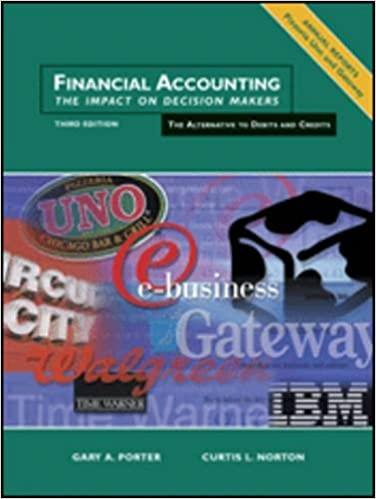
During Year 1, Hardy Merchandising Company purchased $13,000 of inventory on account. Hardy sold inventory on account that cost $9,800 for $14,600. Cash payments on accounts payable were $8,100. There was $13,000 cash collected from accounts receivable. Hardy also paid $3,300 cash for operating expenses. Assume that Hardy started the accounting period with $25,500 in both cash and common stock. Required a. Record the events in a horizontal statement model. In the Cash Flow column, use OA to designate operating activity, IA for investment activity, FA for financing activity, or NC for net change in cash. If the element is not affected by the event, leave the cell blank. b. What is the balance of accounts receivable at the end of Year 1? c. What is the balance of accounts payable at the end of Year 1? d. What are the amounts of gross margin and net income for Year 1? e. Determine the amount of net cash flow from operating activities. Complete this question by entering your answers in the tabs below. ReqA Req B to E Record the events in a horizontal statement model. In the Cash Flow column, use OA to designate operating activity, IA for investment activity, FA for financing activity, or NC for net change in cash. If the element is not affected by the event, leave the cell blank. (Not every cell will require entry. Enter any decreases to account balances and cash outflows with a minus sign.) Event + Beg. bal. 1. HARDY MERCHANDISING COMPANY Effect of Events on the Financial Statements Balance Sheet Income Statement Assets = Liabilities + Stockholders' Equity Statement of Net Accounts Accounts Revenue Common Cash Cash Flows Expenses + + Inventory = + Retained Income Receivable Payable Stock Earnings 25,500 + + 25,500 + 0] + 01 + 13.000 = 13,000+ 01 + 0 ol- ol= 0 0 01 + 14,600+ 0 = 0 + + 01 + + 14,600 14,6001 - 01 = O 14,600 0 0] + ol + (9,800) = 0 + 0 + (9,800) 0- 9,800 = (9,800) 0 (8,100)+1 0 + 0 = (8,100)+1 0 + 0 ol 0 0 0 = 0 0 (8,100) OA 13,000+ (13,000) + 01 = UE 0+ ol 0 0 01 = 0 13.000 IOA (3,300) 01 + 0 = 0+ 01 + (3.300) 0 0 3,300 - (3,300) (3,300) OA $ 27,100 + $ 1,600 + $ S 4,900 + $ 25,500 + S 1,500 $ 14,600 - $ 13,100 = $ 1,500 $ 1,600 = 2a. 2b + 0]+ + 3. 4. 5. End. bal. 3.200 =







